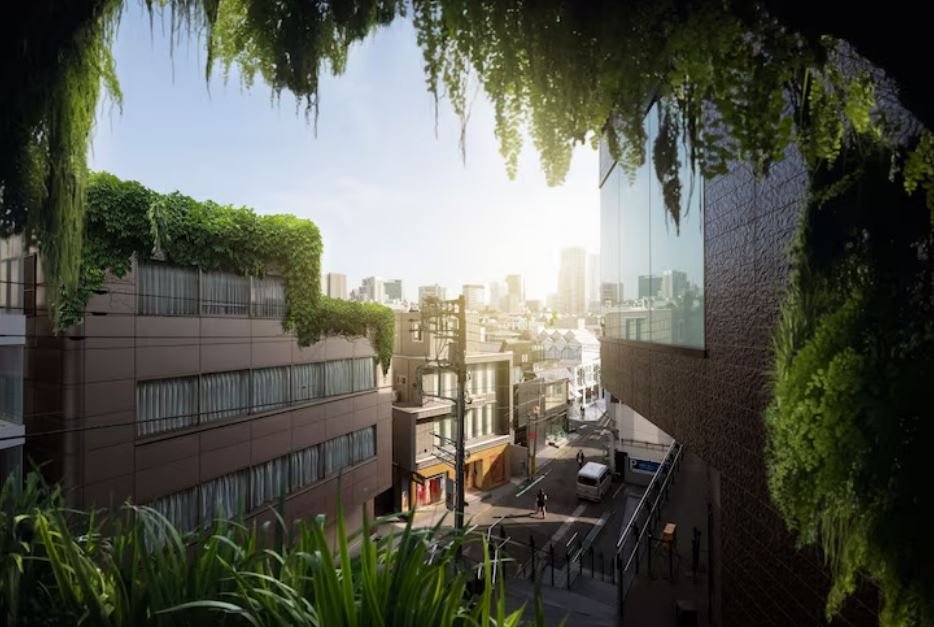
The $10 billion initiative to make buildings climate-positive is more of a rethinking of how people use space than a building project. By combining policy and philanthropy, this comprehensive project seeks to transform the buildings where we live and work from carbon emitters into potent restoration tools. It is a vision that seems bold but remarkably attainable.
Jeff Bezos’ Earth Fund, a $10 billion commitment that was a turning point in climate philanthropy, is at the center of this endeavor. The fund was first established in 2020 to assist NGOs, scientists, and activists; however, it has since shifted its focus to climate-smart infrastructure. Regenerative agriculture and the Rocky Mountain Institute’s “carbon-free building” initiatives have both benefited from its grants. Bezos’ strategy, which is especially creative in its breadth, shows that he recognizes the need to address climate change at every level of contemporary life, including the walls that enclose us.
| Aspect | Information |
|---|---|
| Initiative | $10 Billion Global Drive Toward Climate-Positive Buildings |
| Key Contributors | Bezos Earth Fund, California Climate Bond (Prop 4), Green Coalition (IDB), Amazonia Forever Initiative |
| Objective | Develop buildings that absorb more carbon than they emit, using sustainable materials and technologies |
| Core Focus | Renewable energy, mass timber, carbon capture, biodiversity integration, and urban resilience |
| Scale | Projects in North America, Latin America, and Europe |
| Launch Timeline | 2020 (Bezos Earth Fund), 2024 (California Climate Bond) |
| Key Partners | WWF, The Nature Conservancy, GSA, Inter-American Development Bank |
| Reference | Bezos Earth Fund – Good News Network |
California, which has always been at the forefront of environmental policy, gave this mission more political clout in 2024 when voters approved its $10 billion Climate Resilience Bond. The measure provides funding for projects aimed at making communities climate-positive, such as flood protection, wildfire prevention, and renewable construction. With more than 60% of the public supporting it, it demonstrated that people understand that climate-friendly infrastructure is now necessary for survival and cannot be ignored.
This momentum is being matched by the private sector. The Green Coalition, a group of 20 public development banks, pledged to raise $10–20 billion by 2030 to scale sustainability projects through the Inter-American Development Bank’s Amazonia Forever initiative. This alliance views architecture as a solution rather than just a place to live, which is especially advantageous for countries with intricate relationships between cities, rivers, and forests.
Though incredibly ambitious, the concept of climate-positive buildings is deceptively straightforward. These structures seek to reverse harm rather than just lessen it. They are inspired by biology; they manage waste like self-sustaining ecosystems, produce energy like coral reefs, and absorb carbon like trees. Architects are creating buildings that literally breathe sustainability by combining technologies that recycle air and water and using materials like mass timber, which stores carbon in its fibers.
Modern architecture has entered an era of precision through the integration of digital twins, AI-based modeling, and predictive analytics. Today, engineers are able to model how buildings will behave over many years, forecasting changes in energy use, humidity, and sunlight. These tools allow architects to design with foresight rather than correction because they are incredibly effective at reducing waste and increasing efficiency.
Philosophical transformation goes beyond material transformation. With funding from Bezos, the Nature Conservancy has been at the forefront of incorporating urban forests into city planning. Bioengineered wetlands filter stormwater and restore ecosystems that were lost to development, while rooftops are a riot of biodiversity. Planners in both São Paulo and Los Angeles are reconsidering density as an opportunity to build upward and regenerate downward, rather than as a threat.
Another step in this evolution is the $1 billion federal program recently announced by the U.S. General Services Administration. The agency anticipates reducing emissions by millions of tons per year and saving taxpayers billions in energy expenses by turning federal properties into net-zero campuses. This tactic demonstrates that climate-positive building is not only a wise financial decision, but also a moral one.
This momentum is being strengthened globally by new funding mechanisms. Launched in 2025, Brazil’s Tropical Forests Forever Facility started with pledges of more than $5 billion to reward countries for protecting their forests. The long-term objective, a $125 billion conservation fund, reflects a more general financial reality: when planned with equity and foresight, protecting the environment can be financially advantageous.
However, transforming cities into carbon sinks is no easy feat. Challenges continue to arise as engineers and architects push the limits of innovation. Significant resources are needed to retrofit older buildings to become carbon neutral, and smaller construction companies find it difficult to obtain the knowledge and funding needed to comply with new environmental regulations. The desire to innovate as a group, however, seems stronger than ever in spite of these obstacles.
This optimism was best summed up by Conservation International Brazil’s Mauricio Bianco, who stated, “We must treat buildings as living participants in the environment.” His statement encapsulates the mentality shift that characterizes this movement: architecture is no longer seen as static but rather as responsive, dynamic, and profoundly human.
Under this philosophy, architectural behemoths such as the Bjarke Ingels Group are already illustrating what future cities might look like. Imagine a circular network of interconnected towers that exchange heat and solar energy, with every surface—from underground tunnels to glass façades—participating in the power and carbon exchange. These are not visions of far-off decades, but rather working prototypes that are subtly making their way across North America and Europe.
This movement has a huge cultural impact. Sustainability has emerged as a new type of architectural luxury and a source of prestige. Energy-efficient features are becoming more important to homebuyers than aesthetics, and investors view green certifications as a mark of durability and market value. The change is psychological as well as technological. People are starting to see climate responsibility as something that can be achieved rather than something that must be sacrificed.
Naturally, critics have legitimate concerns. Even with the best of intentions, some contend that mega-philanthropy runs the risk of strengthening the position of billionaires rather than empowering local communities. Others warn that social justice must be prioritized over technological optimism and that truly climate-positive building must also be accessible and affordable. Even so, these criticisms recognize the significance of momentum. After all, there is no longer any room for inaction.
The $10 billion climate-positive bid feels like a proclamation of intent to rebuild in a more intelligent, cleaner, and equitable manner throughout California, Brazil, and beyond. It’s about changing how humans interact with their environment, not just about energy or architecture. Making sure that the plans created today can survive the storms of the future is the challenge now, not creativity.
The 21st century might be remembered for how responsibly we can rebuild if the 20th century was characterized by how high we could build. Buildings are finally learning to give back more than they take thanks to mass timber, AI modeling, and a growing coalition of governments, architects, and philanthropists. This future, which turns building into a kind of climate healing brick by brick using regenerative materials, is both extraordinarily ambitious and vital.
